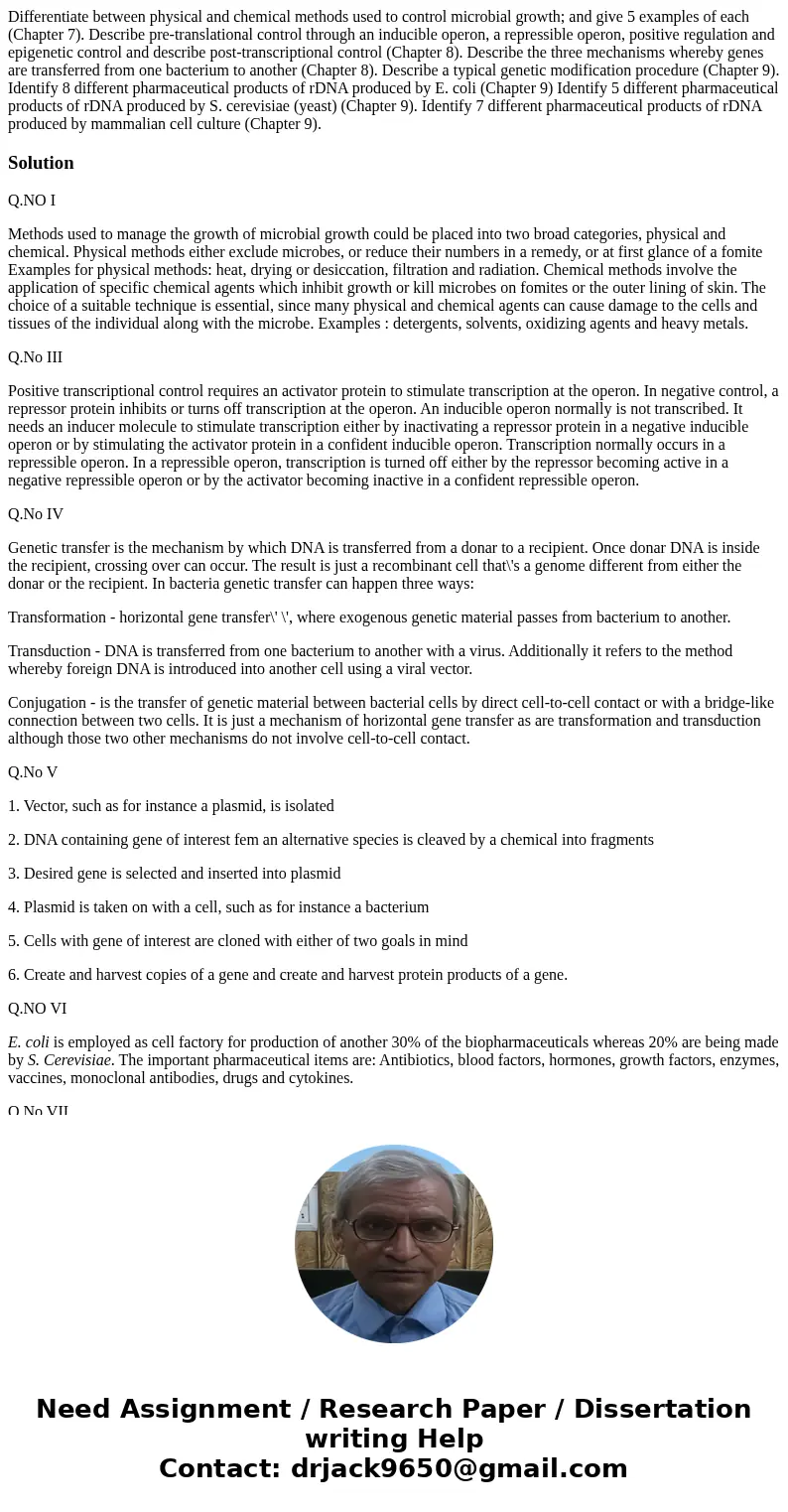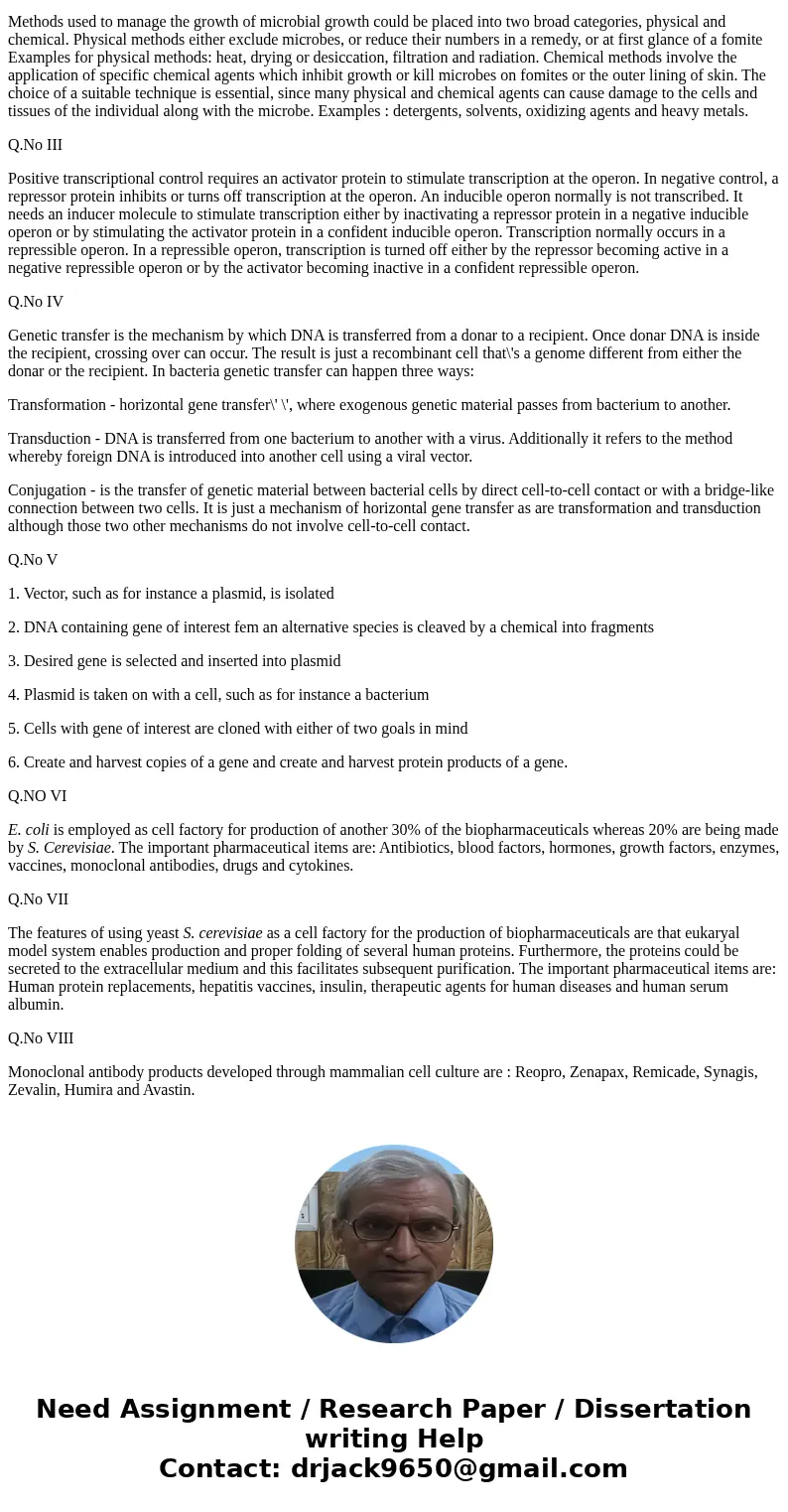Differentiate between physical and chemical methods used to
Solution
Q.NO I
Methods used to manage the growth of microbial growth could be placed into two broad categories, physical and chemical. Physical methods either exclude microbes, or reduce their numbers in a remedy, or at first glance of a fomite Examples for physical methods: heat, drying or desiccation, filtration and radiation. Chemical methods involve the application of specific chemical agents which inhibit growth or kill microbes on fomites or the outer lining of skin. The choice of a suitable technique is essential, since many physical and chemical agents can cause damage to the cells and tissues of the individual along with the microbe. Examples : detergents, solvents, oxidizing agents and heavy metals.
Q.No III
Positive transcriptional control requires an activator protein to stimulate transcription at the operon. In negative control, a repressor protein inhibits or turns off transcription at the operon. An inducible operon normally is not transcribed. It needs an inducer molecule to stimulate transcription either by inactivating a repressor protein in a negative inducible operon or by stimulating the activator protein in a confident inducible operon. Transcription normally occurs in a repressible operon. In a repressible operon, transcription is turned off either by the repressor becoming active in a negative repressible operon or by the activator becoming inactive in a confident repressible operon.
Q.No IV
Genetic transfer is the mechanism by which DNA is transferred from a donar to a recipient. Once donar DNA is inside the recipient, crossing over can occur. The result is just a recombinant cell that\'s a genome different from either the donar or the recipient. In bacteria genetic transfer can happen three ways:
Transformation - horizontal gene transfer\' \', where exogenous genetic material passes from bacterium to another.
Transduction - DNA is transferred from one bacterium to another with a virus. Additionally it refers to the method whereby foreign DNA is introduced into another cell using a viral vector.
Conjugation - is the transfer of genetic material between bacterial cells by direct cell-to-cell contact or with a bridge-like connection between two cells. It is just a mechanism of horizontal gene transfer as are transformation and transduction although those two other mechanisms do not involve cell-to-cell contact.
Q.No V
1. Vector, such as for instance a plasmid, is isolated
2. DNA containing gene of interest fem an alternative species is cleaved by a chemical into fragments
3. Desired gene is selected and inserted into plasmid
4. Plasmid is taken on with a cell, such as for instance a bacterium
5. Cells with gene of interest are cloned with either of two goals in mind
6. Create and harvest copies of a gene and create and harvest protein products of a gene.
Q.NO VI
E. coli is employed as cell factory for production of another 30% of the biopharmaceuticals whereas 20% are being made by S. Cerevisiae. The important pharmaceutical items are: Antibiotics, blood factors, hormones, growth factors, enzymes, vaccines, monoclonal antibodies, drugs and cytokines.
Q.No VII
The features of using yeast S. cerevisiae as a cell factory for the production of biopharmaceuticals are that eukaryal model system enables production and proper folding of several human proteins. Furthermore, the proteins could be secreted to the extracellular medium and this facilitates subsequent purification. The important pharmaceutical items are: Human protein replacements, hepatitis vaccines, insulin, therapeutic agents for human diseases and human serum albumin.
Q.No VIII
Monoclonal antibody products developed through mammalian cell culture are : Reopro, Zenapax, Remicade, Synagis, Zevalin, Humira and Avastin.


 Homework Sourse
Homework Sourse